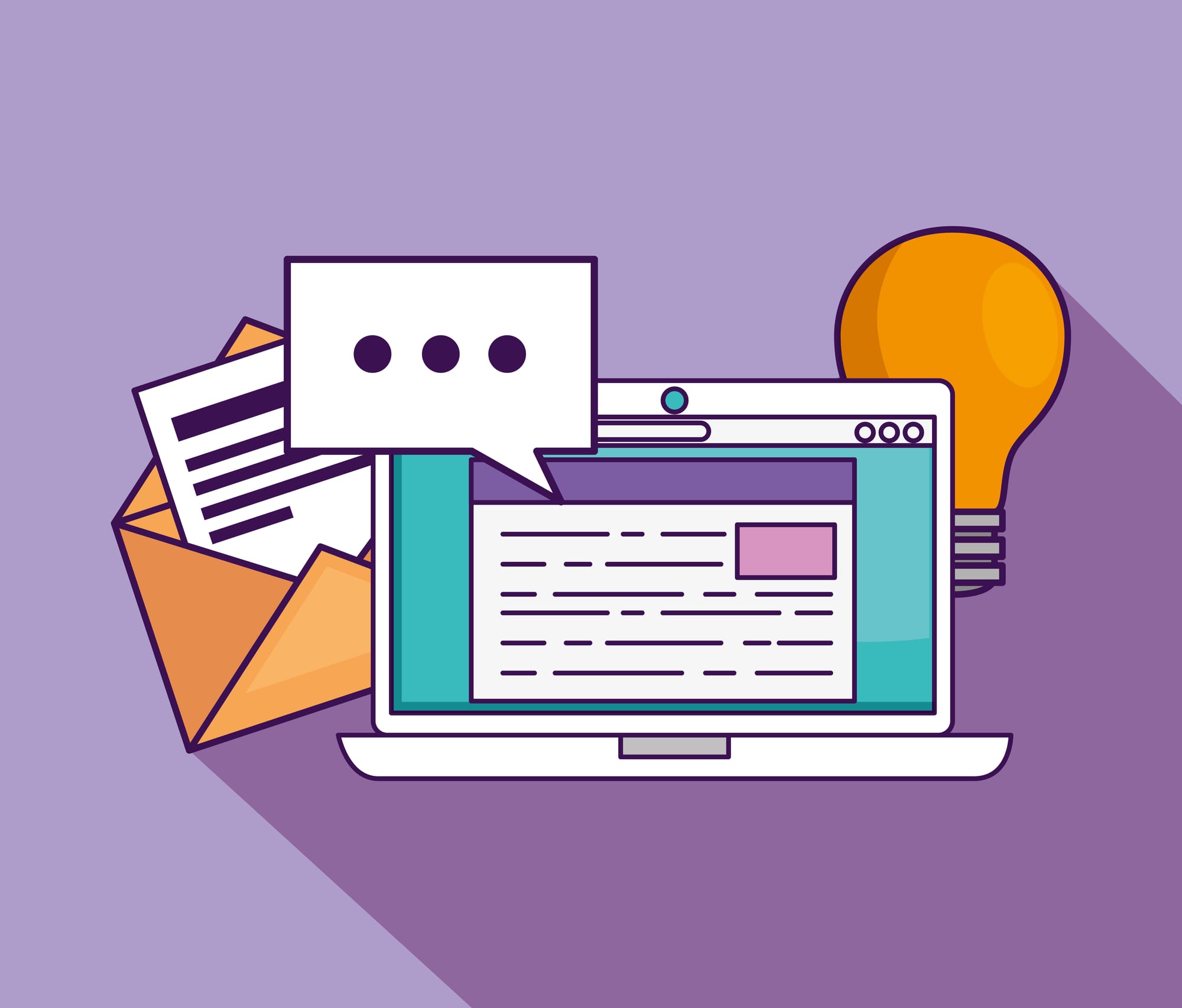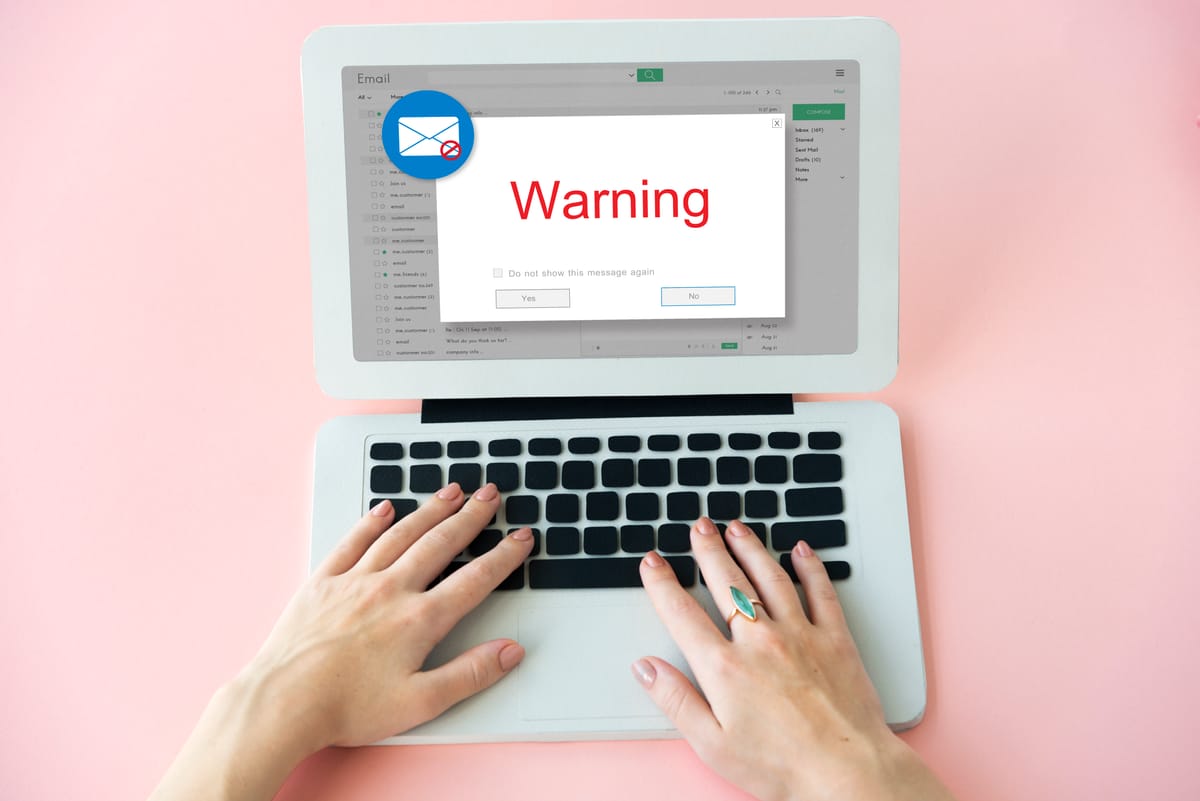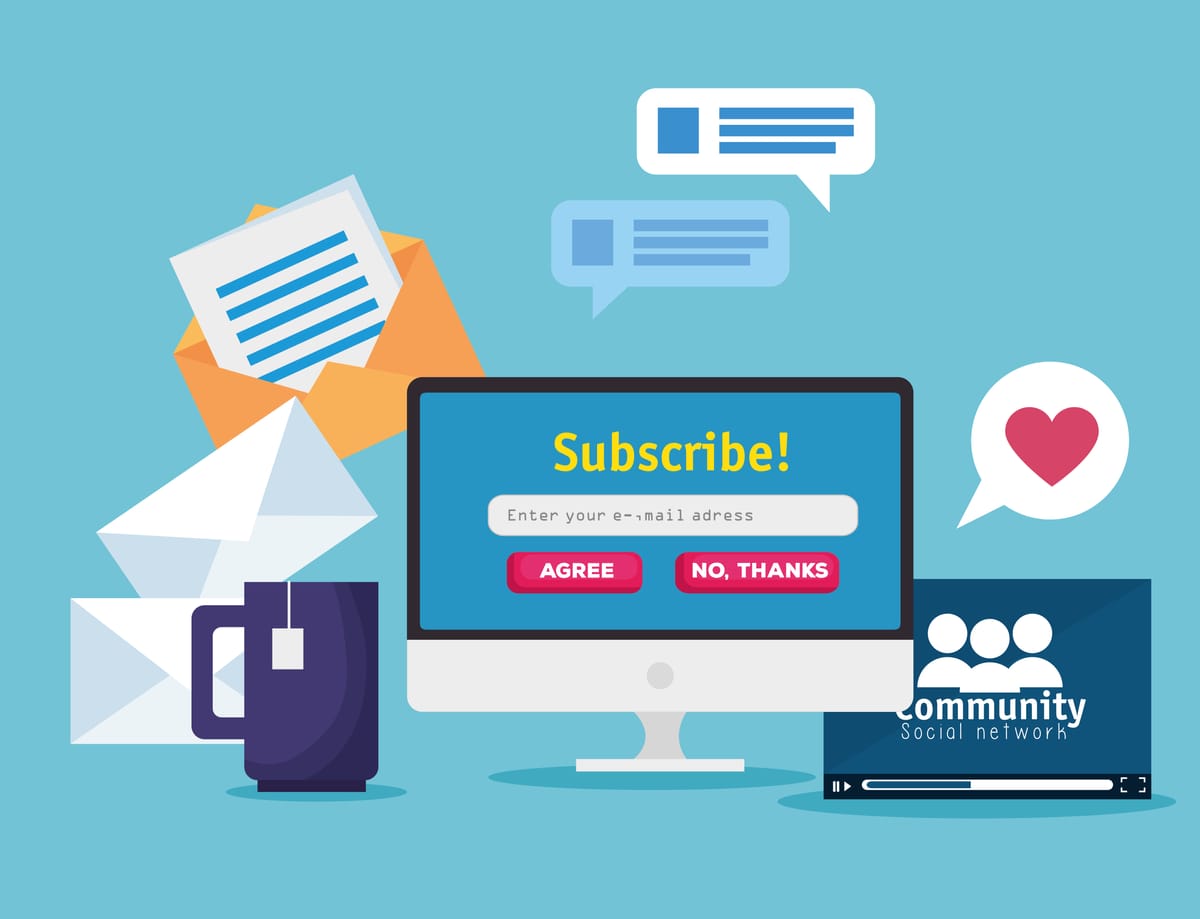How to Write Newsletter Headlines That Skyrocket Your Open Rates

When it comes to newsletters, the subject line is your first impression—it’s what determines whether your email is opened or ignored. A weak subject line can make even the most valuable content go unnoticed, while a great one can drive your open rates through the roof. With so much competition in inboxes today, crafting compelling subject lines is no longer optional—it’s essential.
In this blog, we share 10 proven strategies for writing subject lines that grab attention, spark curiosity, and encourage your audience to click. These strategies are designed to help you make an impact right from the inbox and ensure that your newsletters reach the right audience. Whether you’re promoting a product, sharing insights, or connecting with your readers, these tips will give you the tools to stand out.
And remember, platforms like LetterSub make it easy to amplify your newsletters and engage with a broader audience. As you refine your subject lines, let LetterSub help you reach your goals faster.
1. Use Personalization to Speak Directly to Your Readers

What It Is
Personalization involves customizing your subject lines to include specific information about your reader, such as their name, location, or past behavior. For instance, instead of writing a generic subject line like “Here’s What’s New This Week,” you could write, “Sarah, Don’t Miss This Week’s Tips for Healthier Meals!” This approach makes your emails feel more relevant and tailored to your audience.
Personalization can also include segmenting your audience by interest and crafting subject lines that resonate with specific groups. For example, if you’re running a fitness brand, one segment could receive “John, Your Weekly Gym Hacks Are Here,” while another might get “Jane, 5-Minute Workouts for Busy Moms!” Click here for an additional reading about personalization.
Why It Works
Personalized emails show your audience that you care about their individual interests. Studies show that emails with personalized subject lines have 26% higher open rates than non-personalized ones. They grab attention because they feel like they were written specifically for the recipient, cutting through the noise of generic messages.
Personalization also builds trust and loyalty over time. When people feel like you understand them, they’re more likely to engage with your emails and continue opening them in the future.
Example
- “Sarah, Your Exclusive Offer Expires Tonight!”
- “New Recipes You’ll Love, Mark!”
2. Create a Sense of Urgency or Scarcity

What It Is
Urgency and scarcity are powerful psychological triggers that motivate readers to take action quickly. By using phrases like “Last Chance,” “Limited Time Only,” or “Hurry Before It’s Gone,” you create a fear of missing out (FOMO). For example, “Only 24 Hours Left to Claim Your Discount!” makes your email feel time sensitive.
An article by Deadline Funnel highlights that subject lines with urgency or exclusivity can boost open rates by 22%, click here to read it more.
Why It Works
Urgency compels people to prioritize your email over others. In today’s world, people are overwhelmed with information, and creating a sense of scarcity taps into their natural fear of losing out on an opportunity. When people feel they might miss out, they’re more likely to click and engage.
Urgency is especially effective for promotions, product launches, or exclusive events. It gets your audience to act fast and ensures your email doesn’t get buried in their inbox.
Example
- “Don’t Miss Out! Sale Ends in 12 Hours!”
- “Hurry—Seats for Our Webinar Are Almost Gone!”
3. Ask a Question That Sparks Curiosity

What It Is
Questions in subject lines are a great way to engage your audience and pique their curiosity. Questions like “Are You Making These 5 Fitness Mistakes?” or “What’s the Secret to Boosting Your Productivity?” make readers want to open your email to find the answer.
The key is to ask a question that aligns with your audience’s pain points or interests. Ensure the question relates to the content of your newsletter and delivers value once they open it. The Livewire article suggests that posing questions in subject lines can draw readers in, leveraging their natural curiosity, read it here.
Why It Works
Humans are naturally curious, and a question leaves them wanting an answer. Questions also make your emails feel more conversational, which helps establish a connection with your readers. A question like “Is Your Morning Routine Setting You Up for Success?” feels more engaging than simply stating “Morning Routine Tips.”
Questions work especially well when paired with intriguing or surprising content that your readers can’t find elsewhere.
Example
- “What’s the #1 Habit of Successful Entrepreneurs?”
- “Do You Know the Best Time to Send Your Emails?”
💬 Start asking the right questions and build a deeper connection with your audience using LetterSub’s tools today.
4. Keep It Short and Sweet

What It Is
Short subject lines are concise and straight to the point. In a crowded inbox, a quick and impactful subject line like “Flash Sale: 50% Off” or “Update Inside—Read Now” can capture attention faster than a lengthy one.
Short subject lines are especially effective on mobile devices, where screen space is limited.
Why It Works
Readers don’t have time to read long subject lines, and many will skip over emails that don’t grab their attention immediately. Short subject lines get to the heart of your message and make it easier for readers to understand the value of your email at a glance.
Additionally, mobile devices often truncate longer subject lines, so a short one ensures your message is seen in full.
Example
- “New Arrivals—Shop Now!”
- “Limited-Time Offer Inside”
5. Use Numbers to Highlight Value

What It Is
Numbers make your subject lines more specific and appealing. Instead of saying “Tips for Better Sleep,” a subject line like “7 Tips for Better Sleep Tonight” is more engaging and actionable. Numbers help set clear expectations about the content of your email. The article from Lifewire recommends using lists in subject lines, as they can tempt readers by providing clear and structured information, read it here more detail.
Why It Works
Numbers catch the eye because they promise clear and structured information. They help break up text-heavy inboxes and make your email feel more digestible. People love lists and quantified advice because it feels easier to follow.
Using numbers also communicates value upfront, which encourages readers to click. A headline like “5 Ways to Save Money This Week” immediately tells readers what they’ll gain.
Example
- “10 Subject Line Tricks to Boost Open Rates”
- “3 Reasons Your Emails Aren’t Converting”
6. Incorporate Humor or Playfulness

What It Is
Humorous subject lines use wit, puns, or playful language to grab attention. For example, a subject line like “Oops, We Forgot Your Discount (Not Really)” or “Pumpkin Spice and Open Rates: Let’s Talk” makes your email stand out.
Why It Works
Humor makes your email feel more human and relatable. It shows that your brand has a personality and isn’t afraid to have fun. Readers are more likely to open an email that brings a smile to their faces.
Humor also sets your brand apart from others that take a more formal tone, making your emails more memorable.
Example
- “Your Inbox Just Got Funnier—Open Me!”
- “No Tricks, Just Treats: Open for a Surprise”
7. Use Emojis to Add Personality

What It Is
Emojis are small, colorful icons that add a visual element to your subject lines. A subject line like “🎉 You’re Invited to Our Exclusive Event!” or “🔥 Don’t Miss This Hot Deal!” feels lively and engaging.
Research compiled by NotifyVisitors indicates that emoji-rich email subject lines are 8% more likely to be opened than those without any.
Why It Works
Emojis grab attention because they stand out in text-heavy inboxes. They add emotion and personality, making your email feel more approachable. Emojis can also convey urgency, excitement, or fun in a single character.
However, it’s important not to overdo it—too many emojis can look spammy.
Example
- “💡 Need Help with Your Marketing? We’ve Got You”
- “🏖️ Plan Your Dream Getaway—Click to Explore!”
8. Use Power Words to Evoke Emotion

What It Is
Power words are emotionally charged words that compel readers to take action or spark curiosity. These words can convey excitement, urgency, exclusivity, or even mystery. For example, subject lines like “Unlock the Secret to Instant Success” or “Exclusive Offer: Only Available Today” utilize power words like “unlock,” “secret,” and “exclusive” to grab attention.
Power words often target a specific emotion or desire, such as happiness, fear of missing out (FOMO), or curiosity. They can help your email stand out in a crowded inbox while communicating the value of your message.
Why It Works
Power words work because emotions drive decision-making. By tapping into a reader's feelings, you increase the likelihood of them opening your email. Words like “free,” “proven,” “guaranteed,” “new,” or “exclusive” make your email feel irresistible and create a sense of urgency or anticipation.
Additionally, power words are effective because they connect with readers on a personal level, making your subject line more memorable. Whether you're inspiring excitement or addressing a problem, power words communicate that your email offers value they can’t ignore.
Example
- “Discover the Secret Formula to Success”
- “Last Chance: Your Exclusive Discount Ends Today”
- “Guaranteed Tips to Skyrocket Your Open Rates”
9. Test A/B Variations for Optimal Subject Lines

What It Is
A/B testing involves creating two or more versions of your subject line and sending them to small portions of your audience. You analyze the open rates for each version and send the best-performing subject line to the rest of your email list. For example, you could test “Don’t Miss Out on This Amazing Deal” against “Your Exclusive Offer Awaits!” and determine which one gets more clicks.
A/B testing helps you experiment with different subject line lengths, tones, or strategies to understand what resonates with your audience.
Why It Works
What works for one audience might not work for another, and A/B testing gives you data-backed insights into what subject lines are most effective for your readers. Instead of guessing, you rely on performance metrics to optimize your emails for higher engagement.
This strategy is particularly useful when you’re introducing new campaigns or targeting segmented audiences. A/B testing ensures that your subject lines align with your readers’ preferences, making your emails more effective over time.
Example
- Test Option A: “Big News Inside: Open Now!”
- Test Option B: “5 Minutes to a Healthier You—Read Here!”
10. Lead With Benefits, Not Features

What It Is
Instead of focusing on the features of your product or service, highlight the benefits your readers will gain. A subject line like “Save Time and Energy With Our New Meal Prep Kit” focuses on the benefit (“save time and energy”) rather than the feature. Contrast this with a feature-focused subject line like “Introducing Our Latest Meal Prep Kit,” which might not evoke as much curiosity or excitement.
Leading with benefits requires you to understand your audience’s pain points and frame your subject lines as solutions. Focus on how your content improves their lives or helps them achieve a specific goal.
Why It Works
Readers are more interested in what your email can do for them than the specific details of your product or service. By framing your subject lines around benefits, you immediately communicate the value of your message. This approach also resonates emotionally, as it shows readers how you’re addressing their needs.
When readers feel that opening your email will solve a problem, fulfill a desire, or save them time, they’re much more likely to engage.
Example
- “Simplify Your Morning Routine With These Time-Saving Tips”
- “Achieve Your Fitness Goals Faster—Here’s How”
- “Boost Your Productivity in Just 5 Minutes a Day”
Your subject line is your first impression—it’s the one thing that decides whether your email gets opened or ignored. By implementing these 10 proven strategies, you’re not just boosting your open rates; you’re building trust, engaging your audience, and delivering the value they crave. From personalization and A/B testing to creating urgency and leading with benefits, these tips help you craft subject lines that truly resonate.
But remember, the key to success lies in consistent improvement. As you apply these strategies, keep analyzing your results, adapting your approach, and refining your subject lines for even better performance.
At LetterSub, we understand the importance of getting every email right. With our tools and insights, you’ll have everything you need to optimize your newsletters and grow your audience.

Join today to elevate
Sign up for FREEE today!Additional readings to upscale your newsletter game:





